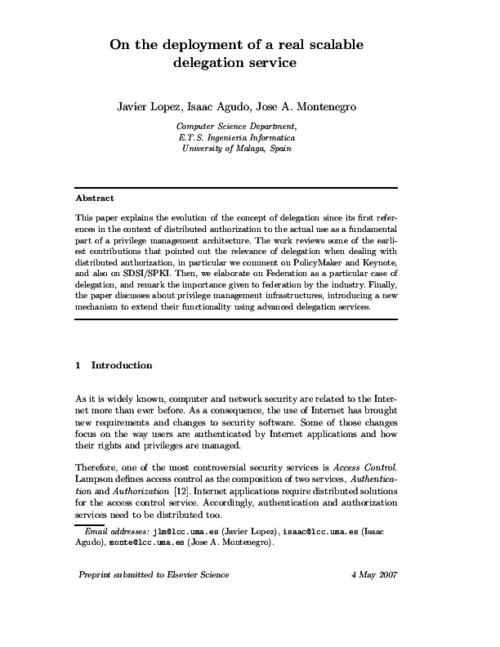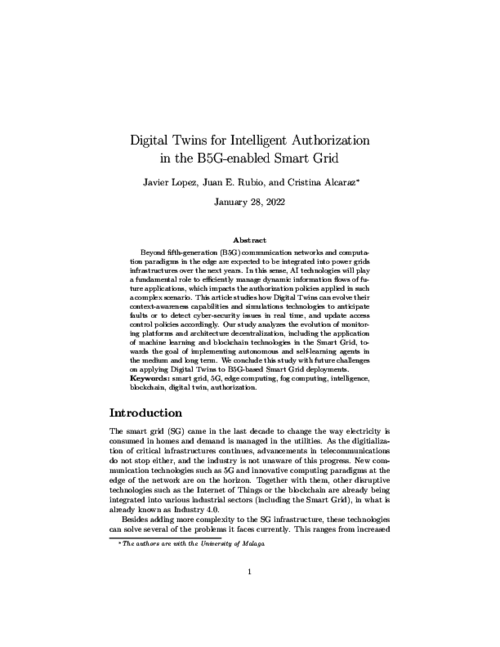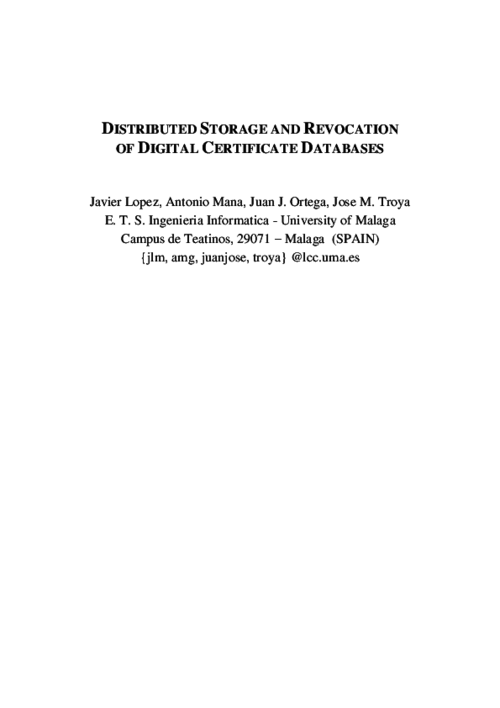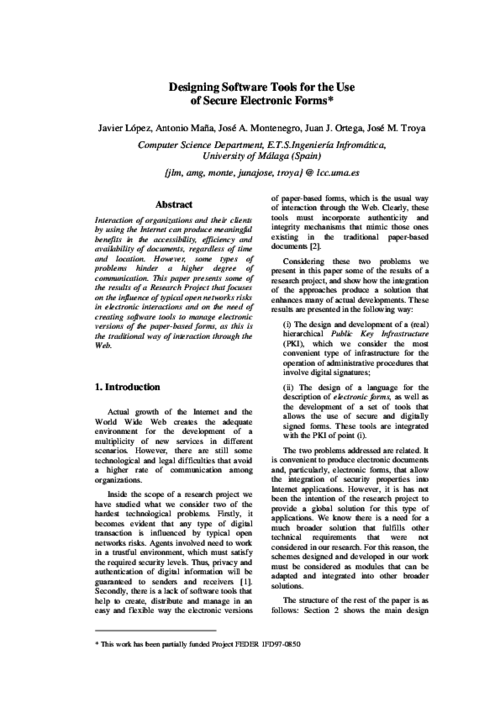 ] Title Type Year
] Title Type Year Information Security Technical Report, vol. 12, no. 3, Elsevier, pp. 139-147, Jun 2007. DOI
Abstract
This paper explains the evolution of the concept of delegation since its first references in the context of distributed authorization to the actual use as a fundamental part of a privilege management architecture. The work reviews some of the earliest contributions that pointed out the relevance of delegation when dealing with distributed authorization, in particular we comment on PolicyMaker and Keynote, and also on SDSI/SPKI. Then, we elaborate on Federation as a particular case of delegation, and remark the importance given to federation by the industry. Finally, the paper discusses about privilege management infrastructures, introducing a new mechanism to extend their functionality using advanced delegation services.

IEEE Wireless Communications, vol. 28, issue 2, IEEE, pp. 48-55, 04/2021. DOI
Abstract
Beyond fifth generation (B5G) communication networks and computation paradigms in the edge are expected to be integrated into power grid infrastructures over the coming years. In this sense, AI technologies will play a fundamental role to efficiently manage dynamic information flows of future applications, which impacts the authorization policies applied in such a complex scenario. This article studies how digital twins can evolve their context awareness capabilities and simulation technologies to anticipate faults or to detect cyber-security issues in real time, and update access control policies accordingly. Our study analyzes the evolution of monitoring platforms and architecture decentralization, including the application of machine learning and blockchain technologies in the smart grid, toward the goal of implementing autonomous and self-learning agents in the medium and long term. We conclude this study with future challenges on applying digital twins to B5G-based smart grid deployments.

11th International Conference on Database and Expert Systems Applications (DEXA’00), LNCS 1873, Springer, pp. 929-938, September, 2000.
Abstract
Public-key cryptography is fast becoming the foundation for those applications that require security and authentication in open networks. But the widespread use of a global public-key cryptosystem requires that public-key certificates are always available and up-to-date. Problems associated to digital certificates management, like storage, retrieval, maintenance, and, specially, revocation, require special procedures that ensure reliable features because of the critical significance of inaccuracies. Most of the existing systems use a Certificate Revocation List, a repository of certificates that have been revoked before their expiration date. The need to access CRLs in order to check certificate revocations becomes a performance handicap. Furthermore, they introduce a source of vulnerability in the whole security infrastructure, as it is impossible to produce a new CRL each time a revocation takes place. This paper introduces an alternative for the storage of digital certificates that avoids the use of CRLs. The system is designed to provide a distributed management of digital certificates by using Certification Authorities that, while being part of a whole Public-Key Infrastructure, operate over local certificates databases. Communication protocols between local databases have been designed to minimize network traffic without a lack of security and efficiency.

3rd ACIS Int. Conf. on Software Engineering, Artificial Intelligence Networking and Parallel/Distributed Computing (SNPD’02), pp. 157-163, Junio, 2002.
Abstract
Interaction of organizations and their clients by using the Internet can produce meaningful benefits in the accessibility, efficiency and availability of documents, regardless of time and location. However, some types of problems hinder a higher degree of communication. This paper presents some of the results of a Research Project that focuses on the influence of typical open networks risks in electronic interactions and on the need of creating software tools to manage electronic versions of the paper-based forms, as this is the traditional way of interaction through the Web.

International Conference on Infrastructure Security (InfraSec’02), LNCS 2437, Springer-Verlag, pp. 325-337, October, 2002.
Abstract
The main aims of Virtual Private Network (VPN) are to isolate a distributed network from outsiders, as well as to protect the confidentiality and integrity of sensitive information traversing a non-trusted network such as the Internet. However, some problems arise when security is considered as the unique problem because VPN users suffer from restrictions in their access to the network. They are not free to use traditional Internet services such as electronic mail exchange with non-VPN users, and to access Web and FTP servers external to the organization. This paper presents a new solution that allows the open use of traditional network services running over TCP and UDP layers, while maintaining strong security features. The new scheme works at the TCP/IP transport layer and does not require the addition of new hardware because it is a totally software solution. As a consequence, the application is totally portable. Moreover, and because of its implementation at the transport layer, there is no need to modify any traditional communication applications previously installed in the network system.
